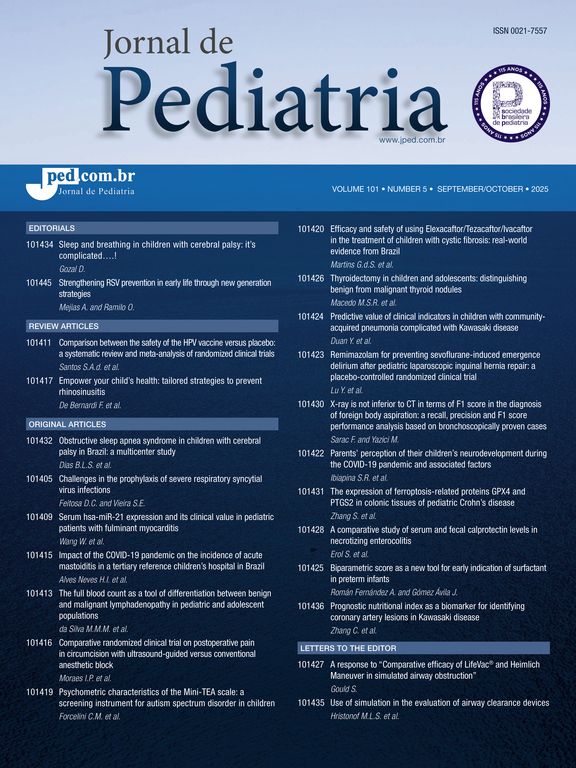82 febrile young infants were studied, prospectively, at the Emergency Service in Hospital Universitário - University of São Paulo. All the children were kept at the Emergency ward for 24 hours. Clinical and laboratory investigations were performed and when necessary, administration of antibiotic agents were started. 18 infants exhibited potentially severe bacterial infections (21.9%). Several important disorders were recognized in 40 infants (48.8%). All infants were followed until the end of the febrile episode: 20 children as inpatients and 62 as outpatients. 38 infants received antibiotic therapy (46.3%). Evolution was satisfactory in all patients. The authors detected in young febrile infants potentially dangerous clinical conditions that need close observation, laboratorial investigation and frequently antimicrobial therapy. The observation period at the Emergency ward was important to allow these procedures and to decide about hospitalization need.
The Impact Factor measures the average number of citations received in a particular year by papers published in the journal during the two preceding years.
© Clarivate Analytics, Journal Citation Reports 2025
SRJ is a prestige metric based on the idea that not all citations are the same. SJR uses a similar algorithm as the Google page rank; it provides a quantitative and qualitative measure of the journal's impact.
See moreSNIP measures contextual citation impact by wighting citations based on the total number of citations in a subject field.
See more







